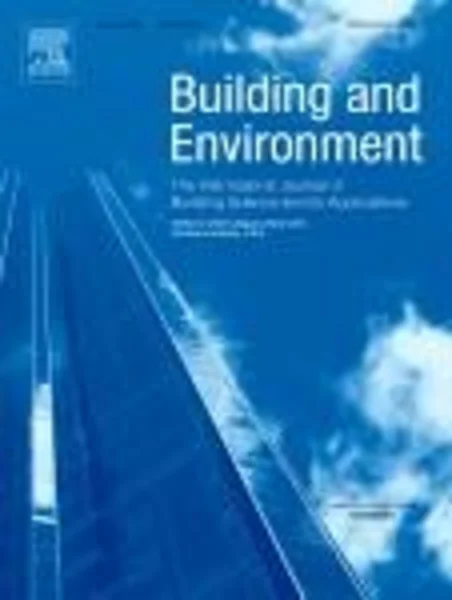-
benchmark experiments for moisture transfer modelling in air and porous materials
جزئیات بیشتر مقاله- تاریخ ارائه: 1390/01/01
- تاریخ انتشار در تی پی بین: 1390/01/01
- تعداد بازدید: 461
- تعداد پرسش و پاسخ ها: 0
- شماره تماس دبیرخانه رویداد: -
the presence of hygroscopic materials has a large impact on the moisture balance of buildings. nowadays, ham (heat, air and moisture) models are widely used to investigate the role of hygroscopic materials on the performance of buildings, i.e. on the building envelope, the indoor climate and valuable objects stored within the building. recently, these ham models are being coupled to cfd (computational fluid dynamics) models to study the moisture exchange between air and porous materials on a local scale (microclimates), or to bes (building energy simulation) models which focus on the interaction between air and porous materials at building level. validation of these numerical codes is essential to gain confidence in the codes. however, available experimental data are rather scarce. this paper describes the design of a new test facility for humidity experiments. a dedicated ahu system is used to provide well-controlled air (constant temperature and rh) to an airtight and well-insulated room-size test chamber. in one of the walls of the chamber a calcium silicate sample is installed. a step in rh of the supply air is imposed. temperature and rh of the supply air, the room air and on various depths inside the sample are continuously registered during the experiments. two types of experiments were carried out to validate a coupled cfd–ham model and a coupled bes–ham model. the temperature outside the test chamber was controlled and there was no temperature difference imposed across the chamber walls. comparing the models with the measured data gave satisfactory agreement.
مقالات جدیدترین رویدادها
-
استفاده از تحلیل اهمیت-عملکرد در ارائه الگوی مدیریت خلاقیت سازمانی و ارائه راهکار جهت بهبود
-
بررسی تاثیر ارزش وجوه نقد مازاد بر ساختار سرمایه شرکت های پذیرفته شده در بورس اوراق بهادار تهران
-
بررسی تأثیر سطح افشای ریسک بر قرارداد بدهی شرکت های پذیرفته شده در بورس اوراق بهادار تهران
-
بررسی تأثیر رتبه بندی اعتباری مبتنی بر مدل امتیاز بازار نوظهور بر نقد شوندگی سهام با تأکید بر خصوصی سازی شرکت ها
-
تأثیر آمیخته بازاریابی پوشاک ایرانی بر تصویر ذهنی مشتری پوشاک ایرانی (هاکوپیان)
-
ارزیابی عملکرد حمل و نقل ریلی ایران در مقایسه با برخی کشورهای جهان به روش dea
-
کاربرد بسترهای نی زار در تصفیه پساب های صنعتی و بهداشتی (مروری)
-
چطور می توانیم در تدریس زبان انگلیسی مدرس موفق تری باشیم؟
-
بررسی عملکرد گسل کته در شمال شیراز (کمربند زاگرس چین خورده)
-
development of biocompatible fluorescent gelatin nanoparticles for cell imaging applications
مقالات جدیدترین ژورنال ها
-
مدیریت و بررسی افسردگی دانش آموزان دختر مقطع متوسطه دوم در دروان کرونا در شهرستان دزفول
-
مدیریت و بررسی خرد سیاسی در اندیشه ی فردوسی در ادب ایران
-
واکاوی و مدیریت توصیفی قلمدان(جاکلیدی)ضریح در موزه آستان قدس رضوی
-
بررسی تاثیر خلاقیت، دانش و انگیزه کارکنان بر پیشنهادات نوآورانه کارکنان ( مورد مطالعه: هتل های 3 و 4 ستاره استان کرمان)
-
بررسی تاثیر کیفیت سیستم های اطلاعاتی بر تصمیم گیری موفق در شرکتهای تولیدی استان اصفهان (مورد مطالعه: مدیران شرکتهای تولیدی استان اصفهان)
-
محاسبه کتاب فرهنگ و تمدن اسلامی در قم قرن سوم هجری، تاریخ قم از 182 تا 420، تاریخ محلی قم از ورود اسلام تا سقوط ال بویه
-
ایقاع منبعی نوین برای تشکیل شرکت: چالش ها و راهبردهای تئوری شخصیت حقوقی با عضو واحد
-
برنامه ریزی و سیاست گذاری توسعه صنعت گردشگری بر پایه ایفای نقش ستون های دولت محلی کارآمد در ایران
-
ویژگی های جامعه اخلاقی ایده آل از منظر مفسر بزرگ آیت الله جوادی آملی
-
experimental study on the structural behavior of cast in-situ hollow core concrete slabs




سوال خود را در مورد این مقاله مطرح نمایید :